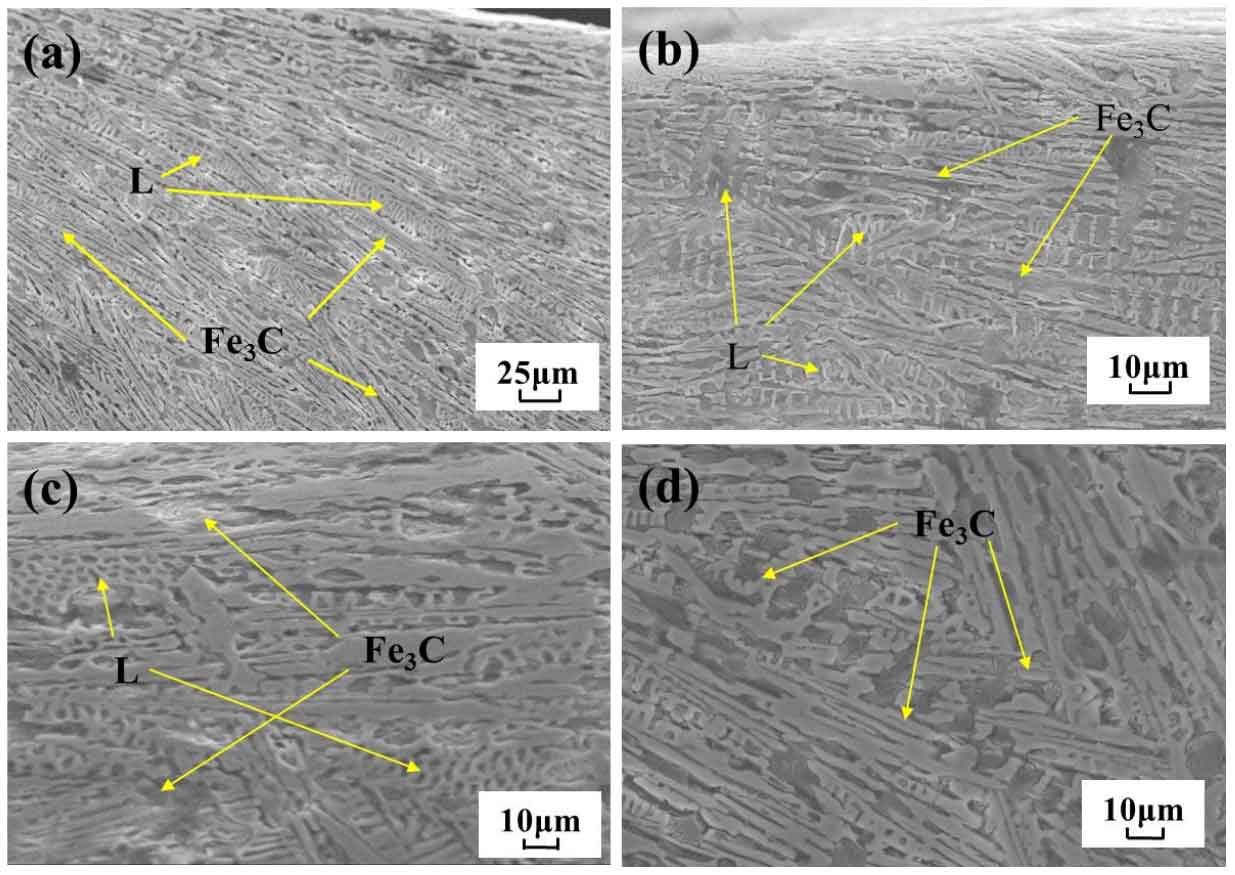Fig. 1 corresponds to the cross-sectional morphology of the surface of gray cast iron melting layer after continuous impact of 3 J, 5 J and 7 J laser energy respectively. It can be seen from the figure that the gray cast iron melting layer has been deformed at different depths after laser impact, and the eutectic structure of cementite in the deformation layer is obviously deformed. When the laser shock energy is 3 J, the long strip cementite in the melting layer of gray cast iron deforms, and the depth of the deformation layer is about 212 μ M or so; When the laser shock energy is 5 J, the depth of the deformation layer increases to 325 μ M, the depth of deformation layer increases obviously; When the laser shock energy is 7 J, the deformation depth of gray cast iron melting layer is 566 μ M, the greater the laser impact energy is, the greater the deformation depth of gray cast iron melting layer is. Because the columnar dendrite structure on the surface of gray cast iron melting layer is coarse and the distance between dendrites is large, it is easy to cause the cracks on the surface of gray cast iron melting layer to crack along the columnar crystal interface. Therefore, it is important to refine the columnar crystal structure on the surface of gray cast iron melting layer as much as possible and transform the columnar crystal into equiaxed crystal to inhibit the propagation of surface crack.
It can be seen in Figure 2 that the long strip cementite structure is refined and deformed, the distance between dendrite arms is significantly reduced, and the original coarse columnar grains are refined, and the distance between dendrites is shortened. Due to the poor plasticity of cementite, the columnar dendrite breaks under large laser impact energy. With the increase of laser shock energy, the fracture and decomposition of cementite is serious. After laser shock, the ledeburite structure distributed between columnar grains of cementite is severely deformed by the extrusion of cementite. In the equiaxed crystal structure at the bottom of the melting layer of gray cast iron, the bonding between dendrites is relatively firm, and there is no obvious deformation and direction change after laser shock.

In the melting layer of gray cast iron, with the increase of laser impact energy, the long strip cementite is obviously refined, and the distance between cementite dendrites is shortened. Under the larger laser impact strain rate, the cementite structure is deformed. However, due to the poor plasticity of cementite, the cementite will not produce large plastic deformation under the action of laser impact pressure. After laser shock, plastic deformation occurs preferentially in the austenite matrix, resulting in a large number of dislocations in the austenite matrix. When the dislocations move to the boundary of cementite, they are hindered by cementite, and the dislocation movement bypasses the cementite, resulting in the increase of dislocation density around the cementite, resulting in the intensification of the deformation of the structure around the cementite, which leads to the deformation of cementite, With the increase of the deformation of the melting layer of gray cast iron, the dislocation density around the cementite increases. When the dislocation density reaches a certain value, the cementite structure breaks.
After laser shock, a large number of cementites shear, fracture and decompose, as shown in the principle of Fig. 3. Because cementite is a metastable phase, laser shock leads to the deformation of cementite structure and increases the instability of cementite. Therefore, after laser shock, the cementite deforms and refines first and then decomposes. The decomposed cementite morphology effectively improves the performance of gray cast iron melting layer and improves the plastic deformation ability of gray cast iron melting layer, which also provides conditions for the next graphitization annealing treatment and shortening the graphitization time of gray cast iron melting layer.


